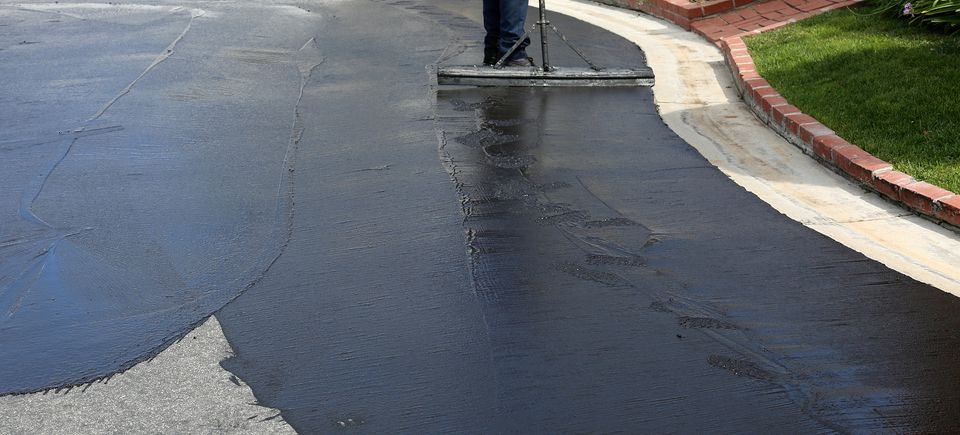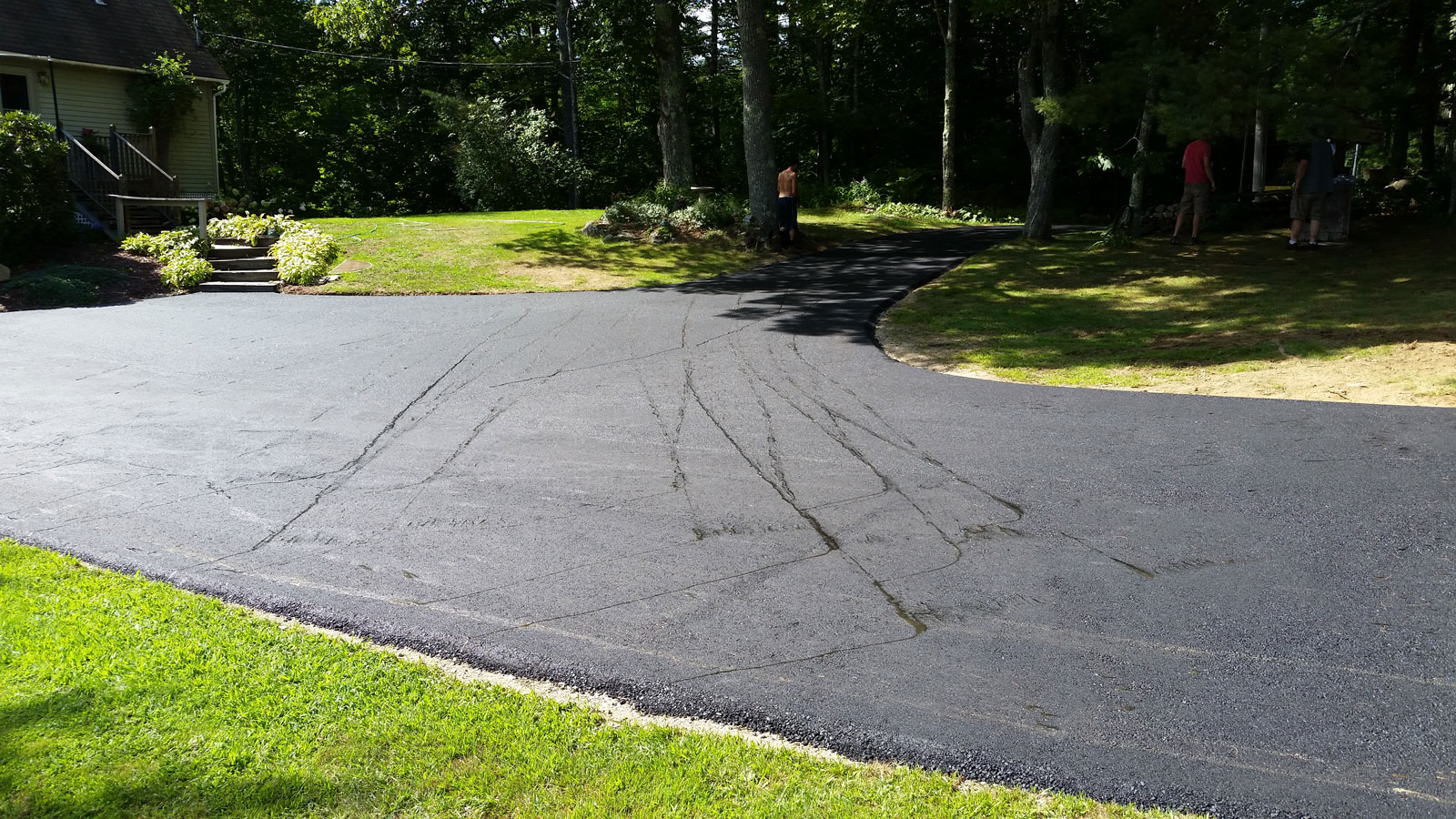Unleash the Prospective: Regrading and Asphalt Sealing for Commercial Areas
Unleash the Prospective: Regrading and Asphalt Sealing for Commercial Areas
Blog Article
Warm Mix Asphalt: A Lasting Solution for Sidewalk
Hot Mix Asphalt (HMA) has actually emerged as a leading lasting selection for sidewalk solutions, using a myriad of ingenious modern technologies and ecological advantages. Its ability to reduce and reuse materials energy consumption provides a compelling situation for its fostering in roadway construction projects. The long-lasting efficiency and toughness of HMA make it a preferred choice for framework advancement. As the need for eco-friendly building and construction practices expands, exploring the nuances of HMA's sustainability can supply valuable understandings into the future of sidewalk options.
Environmental Advantages of Hot Mix Asphalt

Additionally, Hot Mix Asphalt assists to alleviate urban warm island results. Its dark color absorbs sunshine, lowering the amount of warmth mirrored back into the environment contrasted to lighter-colored sidewalks. This can reduce ambient temperatures in metropolitan locations, reducing the demand for air conditioning and ultimately lowering power consumption.
Additionally, Hot Mix Asphalt contributes to boosted stormwater monitoring. Its permeable nature allows water to recharge and infiltrate the sidewalk groundwater supplies, lowering drainage and the danger of flooding. These ecological advantages make Hot Mix Asphalt a lasting choice for paving highways and roadways.
Energy Efficiency in HMA Manufacturing
Is power efficiency a vital factor in the manufacturing of Hot Mix Asphalt (HMA)? Absolutely. Energy plays a considerable role in the manufacturing of HMA, affecting both cost and ecological sustainability. One key aspect of power efficiency in HMA manufacturing is using warm mix asphalt (WMA) innovations (regrading). WMA allows for the mixing and positioning of asphalt at lower temperature levels compared to typical warm mix asphalt, leading to minimized energy usage during production. This process not just reduces fuel usage however also decreases greenhouse gas emissions, making it a more eco-friendly option.
Additionally, improvements in plant technologies have resulted in even more energy-efficient HMA production procedures. Modern plants are made with functions like recycled asphalt pavement (RAP) processing capacities, effective heater systems, and improved insulation, all contributing to power financial savings. By enhancing power usage in HMA production, the industry can minimize its carbon footprint while preserving high-grade sidewalk materials. Energy effectiveness is, therefore, an essential factor to consider in guaranteeing the sustainability of Warm Mix Asphalt manufacturing.
Recyclability of Hot Mix Asphalt
The recyclability of Hot Mix Asphalt (HMA) is a critical aspect of its sustainability and long-term ecological effect. HMA is one of the most recycled materials in the USA, with over 100 million lots my review here of reclaimed asphalt pavement (RAP) being reused annually in new pavement building and construction. Reusing HMA offers a number of ecological advantages, such as reducing the requirement for virgin products, decreasing power usage throughout manufacturing, and decreasing the amount of waste sent to garbage dumps.
The procedure of recycling HMA includes milling the existing pavement, crushing it into smaller items, and blending it with new accumulation and asphalt binder to create a recycled mix. Generally, the recyclability of HMA plays a substantial role in promoting lasting techniques within the sidewalk sector.

Long-Term Efficiency of HMA
Asphalt sidewalks demonstrate durability and resilience over an extended period, showing the long-term performance of Hot Mix Asphalt (HMA) The durability of HMA can be associated to its ability to stand up to heavy web traffic loads, severe climate condition, and the effects of aging. Studies have actually shown that properly designed and correctly built HMA sidewalks can last for two decades or even more with routine maintenance. The key to taking full advantage of the lasting efficiency of HMA depends on making use of high-quality products, complying with ideal practices in building and construction, and implementing efficient upkeep methods. Correct drain, regular inspections, and timely fixings are crucial for preserving the structural integrity of HMA sidewalks with time. Additionally, developments in HMA modern technology, such as the use of polymer-modified binders and cozy mix asphalt, have actually better enhanced the toughness and longevity of HMA pavements. By prioritizing top quality building and maintenance techniques, HMA remains to prove itself as a lasting and economical remedy for lasting pavement infrastructure.

HMA: Longevity and Sustainability
Showing both resilience and sustainability, Hot Mix Asphalt (HMA) has actually come to be a keystone in the construction of long-lasting sidewalk infrastructures - angled parking. HMA's resilience comes from its capacity to endure heavy tons, harsh weather conditions, and high traffic volumes, making it a trustworthy choice for highways, freeways, and airport paths. The composition of HMA, which usually includes accumulations, binder, and filler, plays a crucial duty in improving its long life and resistance to tear and put on
Additionally, HMA's hop over to these guys sustainability lies in its recyclability and energy-efficient manufacturing procedure. The capacity to reuse recovered asphalt sidewalk (RAP) in new HMA mixes lowers the need for virgin products and decreases the ecological influence of pavement building and maintenance. Furthermore, the power efficiency of producing HMA depends on its reduced mixing temperatures compared to other sidewalk products, resulting in minimized power intake and greenhouse gas emissions.
Conclusion
In final thought, warm mix asphalt (HMA) uses a lasting service for pavement with its ecologically friendly qualities. HMA's recyclability, power performance in production, and long-term durability make it a green choice for roadway building. By preserving natural deposits, decreasing waste, and decreasing greenhouse gas discharges, HMA plays a vital duty in advertising sustainability in framework growth. Its ability to mitigate city warm island impacts better highlights its relevance in producing resistant and environmentally aware sidewalk systems.
HMA is one of the most recycled materials in the United States, with over 100 million loads of recovered asphalt pavement (RAP) being reused every year in brand-new pavement construction.The procedure of recycling HMA includes continue reading this crushing the existing sidewalk, squashing it right into smaller sized items, and mixing it with brand-new aggregate and asphalt binder to develop a recycled mix.Asphalt sidewalks demonstrate resilience and strength over an extensive duration, mirroring the long-lasting performance of Warm Mix Asphalt (HMA) In addition, innovations in HMA modern technology, such as the use of polymer-modified binders and warm mix asphalt, have better improved the durability and longevity of HMA sidewalks. The ability to recycle recovered asphalt sidewalk (RAP) in new HMA mixtures minimizes the need for virgin products and reduces the environmental influence of sidewalk construction and upkeep.
Report this page